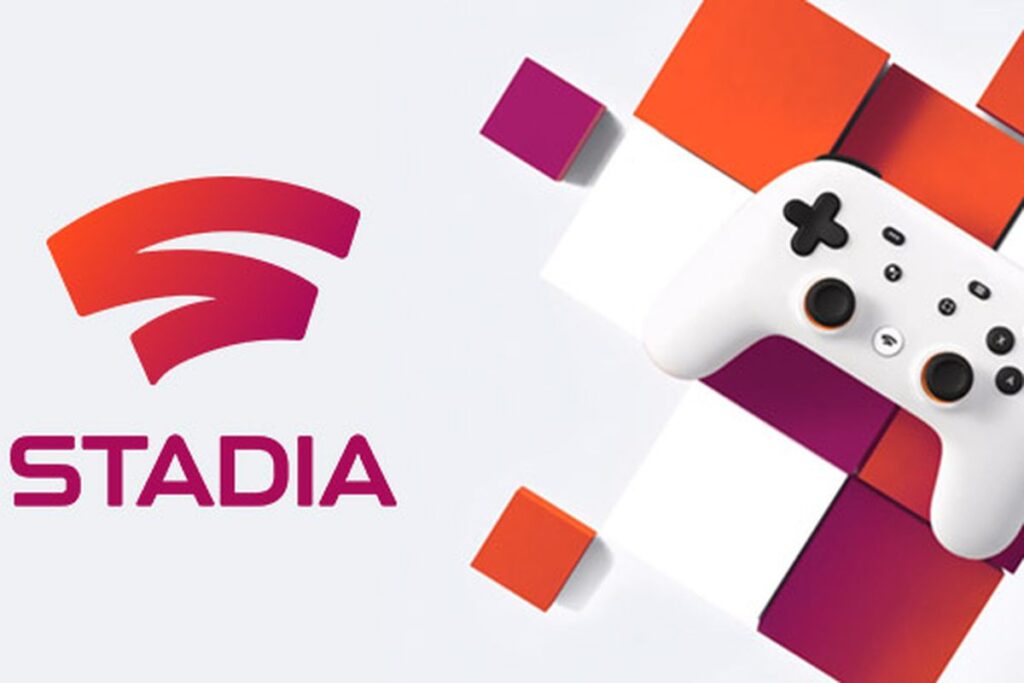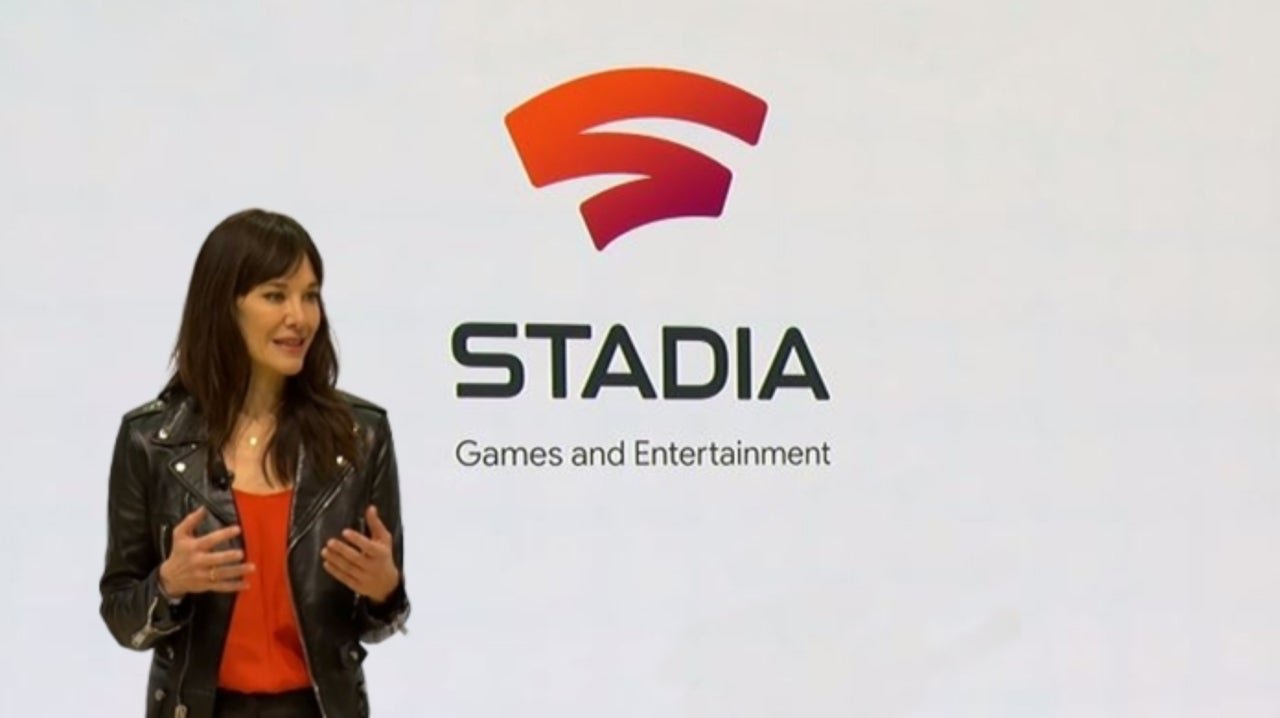
Google is less than a month away from launching its Google Stadia cloud gaming platform. On November 19, those who preordered the Founder’s Edition will start receiving their launch kits (although Google has said it’s possible that some consumers may have to wait a few extra days). A number of AAA games will be available at launch, including Destiny 2 and Red Dead Redemption 2, but Google knows that it needs to drive Stadia’s appeal with first-party content available nowhere else. To that end, Jade Raymond, VP of Stadia Games and Entertainment, announced the company’s first studio in Montreal.
Raymond is no stranger to Montreal. Not only did she grow up in the city, but she spent time in development at both Ubisoft and EA in Montreal. Now she’s looking for the best and brightest to help Stadia on its mission to “produce exclusive, original content across a diverse portfolio of games in all your favorite genres.”
Importantly, Raymond — one of the most notable women in game development over the past two decades — is aiming to ensure that Stadia’s Montreal studio is built with diversity as a core tenet from the very start. As Redhill Games’ Matias Myllyrinne noted at GameDaily Connect in London, building a studio with a focus on positive company culture, inclusivity, and transparency can be a key to success.
“Just as Stadia intends to change the way games are accessed and experienced by players, we want to change the way games are made,” Raymond remarked. “That starts with our culture. Stadia is committed to fostering a diverse and inclusive workplace; these diverse perspectives will shape the games we create together. We’re committed to building an environment that will empower the developers who work at Stadia to create new, unique gaming experiences.”
In a separate interview with GamesIndustry.biz, Raymond explained that Stadia’s first-party studio system is just getting started and that she’s looking to build out a few more studios to complement the team in Montreal. Beyond that, Raymond is setting up a proper publishing structure so that Stadia can “ship exclusive content created by indie devs and other external partners.”

You might assume that Stadia is all about making AAA content accessible across devices in the cloud, but Raymond’s comments suggest that Google is happy to work with talented indies as well.
“Initially we’re going to have some interesting indie-style titles we sign and they might look a little different, or take advantage of a YouTube integration, or have a different role for a streamer,” Raymond said. “But they won’t right away solve every problem or uncover every possibility of what cloud-native gaming is going to open up.”
Cloud-native gaming is a term you’ll be hearing a lot as Google, Microsoft and others investing heavily in the cloud try to figure out what it is about the cloud that makes gaming so special apart from the ability to play high-end games on any device connected to a decent internet service. It could take some time for Google to properly demonstrate what that appeal is, especially as AAA games can take years to develop.
“It is a long term view that Google is taking,” Raymond acknowledged to GamesIndustry.biz. “For a big bet and a huge new IP that’s going to fully leverage the cloud, it may be several years. But we do have quite a few exclusive games in the works that will demonstrate some of the exciting things about the platform all along the path. It won’t be four years before gamers get to see the new exclusive, exciting content. There will be some coming out every year, and more and more each year.”
For Steve Cottam, CEO of UK-based retro cloud gaming service Antstream, the fact that Google is investing so heavily in cloud gaming is helping to move the needle on the tech and advancing the conversation with the mainstream.
“It is great that the conversation is moving away from ‘Can it be done?’ to ‘What can we do with it?’ It will be incremental steps. For the first wave of content, targeting cloud will be much like targeting PC or console; to all intents and purposes, it will make little difference. Developers will use an engine like Unreal or Unity, and the cloud will be another device to target,” he told GameDaily.
“What is exciting, as native cloud gaming becomes the norm, is the potential for developers to use the vast capacity of the cloud, to offer new experiences. Developers will be able to call upon the vast computational and storage capabilities of the data centre to deliver experiences beyond those possible on consoles. For example, imagine having thousands of players on screen at once in a mega battle and vast, ever-expanding worlds. The extent to which developers push boundaries will be restrained more by the cost considerations of delivering such experiences, rather than the capabilities of the hardware.”
Just as many game developers are still toying around with how to create engaging interactive entertainment in the VR/AR space, Cottam sees cloud gaming as another technology with massive potential to change the industry. “We are at the dawn of the creation of the Oasis,” he said referring to the movie Ready Player One.
While Google and Microsoft have the resources to push what’s possible with the cloud, Cottam does believe that developers should begin to familiarize themselves with the new technology and to start thinking about what they could create, especially if they intend to target Stadia, Project xCloud or others in the near future.
“It is vital that developers engage with the cloud providers early on to start considering how the new capabilities can be incorporated into the design phase. Developers will need to actively apply research and development in the cloud to stay on a level playing field with the cloud first-party studios,” he said.
“The change will be slow at first, but once cloud gaming is fully established, new capabilities will emerge at a phenomenal rate.”
Google understands that it has a lot to prove with Stadia. That’s why it’s hired high-caliber veterans like Jade Raymond and Phil Harrison, among others. The company seems serious, but it’s backed out of other projects before (just recently it abandoned Daydream VR). Until consumers start seeing a wide variety of exclusive content, it’s hard to say just how well Stadia will fare.
“I still believe Stadia’s greatest challenge will be the content offering,” Candice Mudrick, Newzoo’s Head of Market Analysis, told GameDaily. “Google’s studio strategy indicates a willingness to commit to gaming for the long-term. AAA games take a long time to develop – several years, in many cases. That they are announcing their first-party studio now implies that first-party content will not be ready for many years.
“In the meantime, they could acquire other studios or developer projects to grow their first-party catalog, but risk losing consumers to the more established veterans while they build new franchises. Additionally, if Google obtains third-party content for short-term releases, it’s unclear whether they would be able to timely implement the cloud-native features gamers are most excited to see in action.”
Google is also facing an inconsistent internet infrastructure across the world. While parts of Asia have robust, blazing fast speeds, many rural parts of North America haven’t kept up. Beyond that, data caps imposed by ISPs like Comcast could prove troublesome. Comcast has put in place a 1TB cap for much of its userbase in the U.S. and gamers playing on Stadia in 4K HDR could eat through that full 1TB in just 65 hours of gaming.
There’s also the question of the business model. Before Stadia was unveiled, many had expected a Netflix-style buffet of games for one price. Instead, the Pro-tier costs $9.99 monthly to access, comes with some free titles, but mostly encourages a la carte purchases at full price (just as with any digital download). Whether that’s enough of a value proposition for consumers, time will tell, but Mudrick believes it’s actually better for the industry’s health.
“The business model may not be the most ideal for consumers, but on the other hand it’s necessary for the developers to monetize their games effectively,” she said. “The industry is already famous for crunch, and it might not be possible to maintain quality going from $60 per game per consumer, to a model where the $10/mo from consumers is effectively split between the other developers in the catalog (platform/overhead fees aside).”
The next 12 months for Stadia will be very interesting to watch unfold. Raymond will have her hands full, but she’s genuinely excited to paint on this new cloud canvas. “It’s this new space to figure out all of a sudden. What’s going to be fun? Where’s the value really going to lie?” she said.
As the Stadia team and its development partners start answering those questions, consumers will be answering their own questions, like “Do I want to add another subscription for entertainment to my budget?” or “What does the cloud do for me? Am I better off just downloading games?”
As Laine Nooney, assistant professor and historian of video games at New York University expressed to CNN, “There is quickly becoming too many choices, too many products, and we’ve still seen zero consumer experience. I think this might be an example of executives thinking they are solving a problem that no one asked them to solve.”
 GameDaily.biz © 2025 | All Rights Reserved.
GameDaily.biz © 2025 | All Rights Reserved.